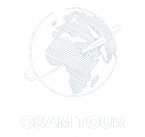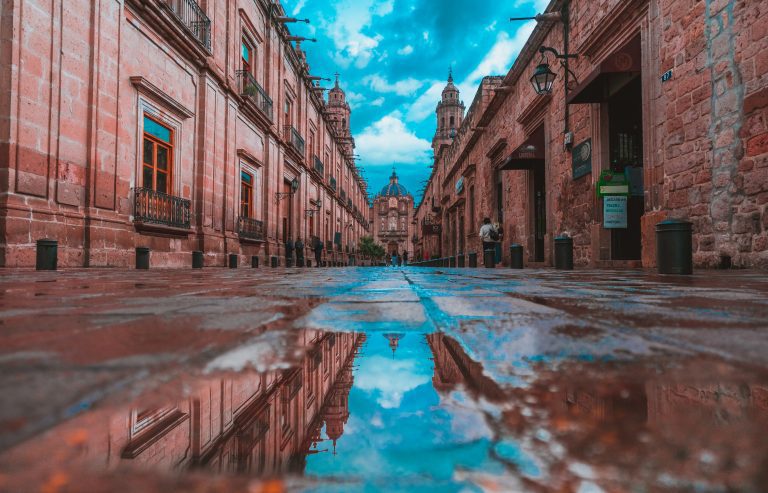Exploring the Wonders of PERU: A Comprehensive Peru Travel Guide

Whether you’re drawn to the awe-inspiring ruins of Machu Picchu, the lush Amazon rainforest, or the bustling streets of Lima, this comprehensive Peru travel guide is your compass. From accommodation tips to money-saving strategies, cultural insights to culinary delights, we’ve curated essential information to ensure an unforgettable exploration of Peru.
Fast Facts About Peru
- Climate: Peru boasts a diverse climate due to its varying landscapes. Coastal areas enjoy a mild climate, while the Andes exhibit cooler temperatures. The Amazon basin is known for its humidity and rain. Pack accordingly for each region’s unique weather!
- Local Currency: Peruvian Sol (PEN) is the currency here. It’s wise to carry some cash, but credit cards are widely accepted, especially in urban areas.
- Power Voltage: Power voltage is usually 220V, and outlets are Type A and Type B. Don’t forget your adapter for charging your devices!
- Language: Spanish is the official language, but many locals in tourist areas speak English. Learning a few basic Spanish phrases can go a long way in enhancing your experience.
- Religion: Catholicism is predominant, but Peru’s history is a mosaic of cultures, resulting in a rich blend of beliefs. Respect for cultural diversity is crucial.
- Safety: Peru is generally safe for travelers, but like anywhere else, be cautious with your belongings. Consult local guides for advice on specific areas.
- Cultural Etiquette: Peruvians are warm and welcoming. A small gesture like learning to greet locals with a handshake and saying “Buenos días” can create a positive impression.
- Tipping: Tipping is customary, especially in restaurants and for service providers. Around 10% is the norm, but feel free to adjust based on your experience.
Best Time to Visit Peru: Seasons and Festivals
- Dry Season (May to September): This is prime time for visiting. Coastal areas and the Andes experience pleasant weather, making it perfect for outdoor adventures and exploring ancient ruins.
- Wet Season (October to April): Rainfall increases, particularly in the Amazon region. However, this is also when the landscapes burst with life, and Machu Picchu is less crowded.
- Inti Raymi (June 24th): Cusco’s grandest festival celebrates the Incan Sun God. Witness vibrant parades, music, and dance.
- Fiestas Patrias (July 28th-29th): Peru’s Independence Day. Enjoy fireworks, traditional dances, and sumptuous Peruvian dishes.
- Carnival (February or March): Dates vary each year, but vibrant water and paint fights, music, and dancing dominate the streets.
- Qoyllur Riti (May or June): A unique Andean festival with indigenous roots. It’s a pilgrimage to the Sinakara Valley, featuring dazzling costumes and rituals.
Top Attractions and Things to See and Do in Peru
- Machu Picchu: A bucket-list must! This ancient Incan city atop the Andes is a UNESCO World Heritage Site and offers breathtaking views.
- Sacred Valley: Discover Incan ruins, traditional markets, and breathtaking landscapes. Don’t miss Pisac and Ollantaytambo!
- Amazon Rainforest: Immerse yourself in the world’s largest tropical rainforest. Witness diverse wildlife and indigenous cultures.
- Lake Titicaca: The world’s highest navigable lake boasts floating reed islands and rich indigenous heritage.
- Nazca Lines: Marvel at these mysterious geoglyphs etched into the desert floor. Aerial tours reveal intricate designs.
- Colca Canyon: Twice as deep as the Grand Canyon, this stunning natural wonder offers trekking and the chance to spot Andean condors.
- Cusco: Explore this historic city with its Spanish colonial architecture, bustling markets, and vibrant festivals.
- Arequipa: Known as the “White City,” visit colonial buildings, the Santa Catalina Monastery, and explore the surrounding volcanoes.
- Huacachina: An oasis in the desert! Try sandboarding and take in the stunning desert sunset.
- Peruvian Cuisine: Indulge in ceviche, lomo saltado, and other delectable dishes. Food is an integral part of Peruvian culture.
The Best Ways To Get Around Peru
- Domestic Flights: Ideal for covering long distances quickly, especially between major cities like Lima, Cusco, and Arequipa.
- Buses: Extensive bus networks connect towns and cities. Choose from budget to luxury options for various routes.
- Trains: Experience scenic journeys like the luxurious Belmond Hiram Bingham to Machu Picchu or the Andean Explorer to Lake Titicaca.
- Taxis and Ride-Sharing: Common in urban areas. Opt for registered taxis or ride-sharing services for convenience and safety.
- Local Transportation: Embrace local life by using colectivos (shared vans) or combis (small buses) for short distances within towns.
- Walking: Many attractions in cities are within walking distance. It’s a great way to soak in the local atmosphere and discover hidden gems.
- Biking: Explore cities like Lima on two wheels. Some areas offer bike rentals and dedicated bike lanes.
Accommodation Tips: Peru
- Diverse Options: Peru offers a range of accommodations, from budget hostels to luxurious resorts. Research and book in advance for the best deals.
- Homestays: Immerse yourself in local culture by opting for homestays in rural areas. Experience traditional Peruvian life firsthand.
- Boutique Hotels: Discover charming boutique hotels in cities like Lima and Cusco. These provide a unique and personalized experience.
- Ecolodges: For eco-conscious travelers, consider staying at ecolodges in the Amazon rainforest. Enjoy nature while minimizing your impact.
- Agritourism: Experience rural life by staying on a working farm. Learn about traditional agriculture and enjoy farm-fresh meals.
Peru Travel Guide: Money-Saving Tips
- Free Museums: Take advantage of Peru’s free museum days. For instance, the National Museum of Archaeology in Lima offers free admission on the first Sunday of each month.
- City Cards: Some cities offer tourist cards that provide discounts on attractions, transportation, and more. Lima’s “Lima Pass” is a great example.
- Local Eateries: Eat like a local at “menu del día” restaurants. These offer affordable fixed-price menus with traditional dishes.
- Public Transportation: Use local buses and trains to get around cities. They’re cost-effective and allow you to experience daily life.
- Haggle Wisely: Brush up on your bargaining skills when shopping at markets. Vendors often expect a bit of negotiation.
Culinary Delights and Traditional Cuisine in Peru
- Ceviche: Try this zesty dish made with fresh seafood, lime juice, onions, and cilantro. It’s a refreshing treat by the coast.
- Lomo Saltado: Savor stir-fried beef, onions, tomatoes, and fries, seasoned with soy sauce and spices. A fusion of Peruvian and Chinese flavors.
- Anticuchos: These skewered and grilled meats, often made from beef heart, are a popular street food. Don’t miss this authentic taste.
- Quinoa: Peru is a quinoa paradise. Taste it in salads, soups, and even desserts for a healthy and hearty meal.
- Pisco Sour: Enjoy Peru’s national drink – a tangy cocktail made from Pisco brandy, lime juice, egg whites, and bitters.
Souvenir Ideas: Bringing a Piece of Peru Home
- Alpaca Wool Items: Find cozy sweaters, scarves, and blankets made from soft alpaca wool. These make for warm and unique souvenirs.
- Textiles: Handwoven textiles showcase intricate patterns and vibrant colors. Look for traditional Andean designs.
- Pottery and Ceramics: Peru’s rich history is reflected in its pottery. Pick up beautifully crafted ceramics to adorn your home.
- Jewelry: Silver and gold jewelry featuring indigenous designs are popular choices. Look for pieces that capture Peru’s artistic heritage.
- Local Crafts: From wooden carvings to handmade crafts, local markets offer a variety of artisanal products that embody Peruvian culture.
Additionally, check out our articles about 2023 top travel destinations in the world, and the best holiday destinations in 2024.






